Abstract
A multi-centre controlled trial of steroid treatment of the nephrotic syndrome was carried out on 125 patients. Of these, 64 were controls and 61 received prednisone in a recommended dose range of 20-30 mg./24 hours. The actual initial dose averaged 29 mg./24 hours. Treatment was continued for a variable period, but not less than six months. More than 10 mg./24 hours was given on average for 12 months to all patients, and for longer periods to some. Patients were classified, on the basis of biopsy specimens, into three groups: A, minimal change; B, membranous nephropathy; and C, proliferative glomerulonephritis. In groups B and C prednisone did not have any strikingly favourable effect on proteinuria or on renal function as compared with the control group. In group A, however, prednisone reduced proteinuria to a striking and statistically significant extent. It had little if any effect on long-term renal function in any group. The death rate was higher in the combined prednisone groups (17/61) than in the control groups (12/64). This difference was not statistically significant, but there was a significantly higher number of deaths from cardiovascular disease in the prednisone group, whereas the numbers of deaths from renal failure were not significantly different in the two groups.
Full text
PDF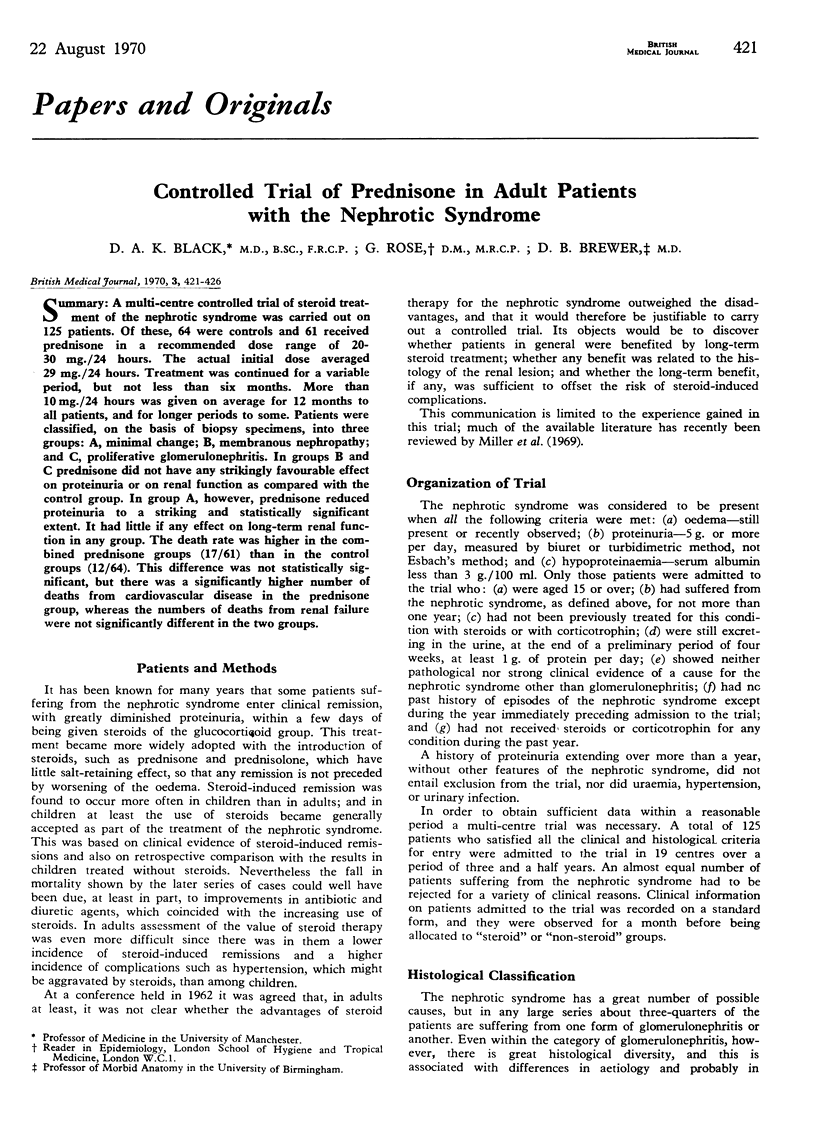
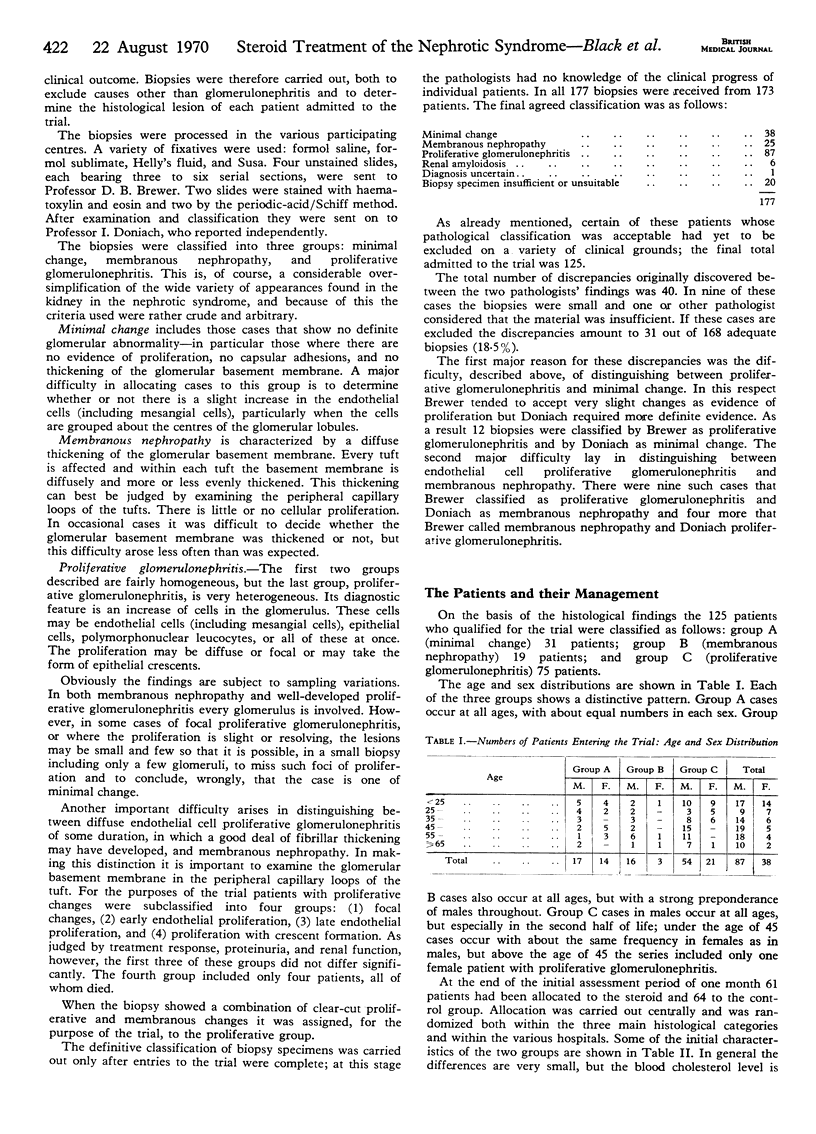
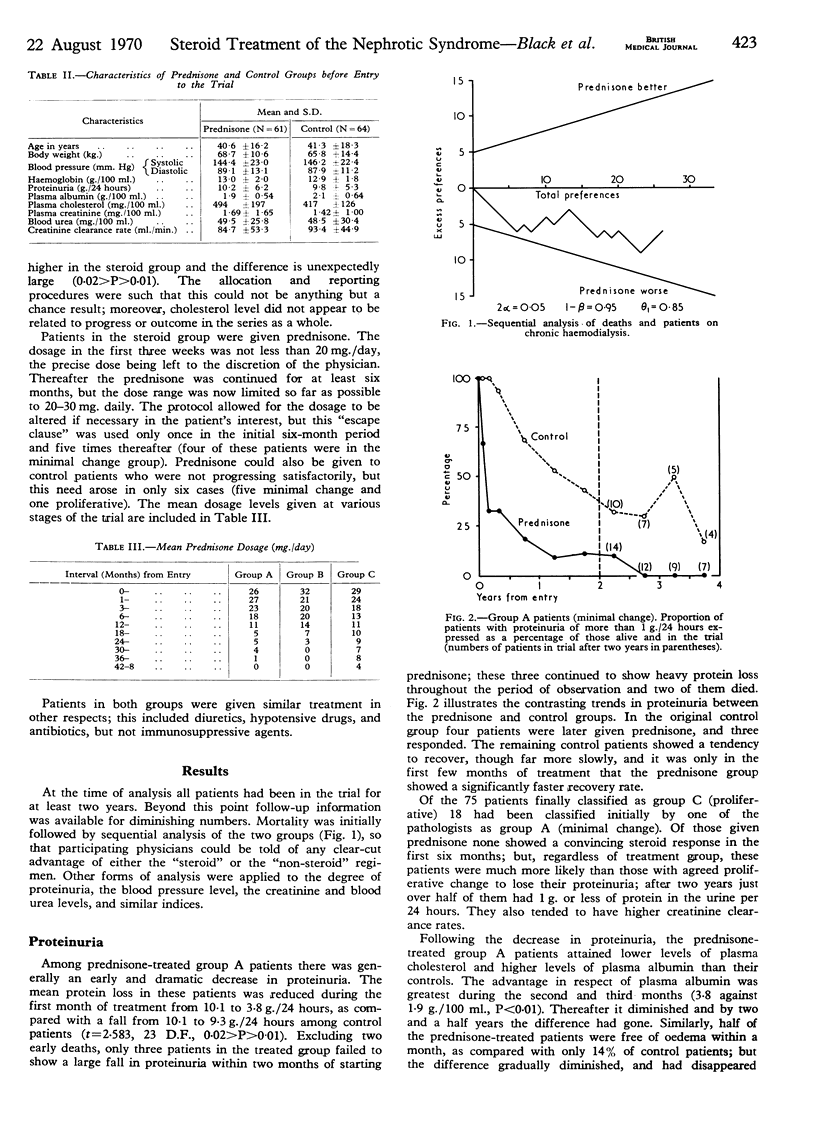
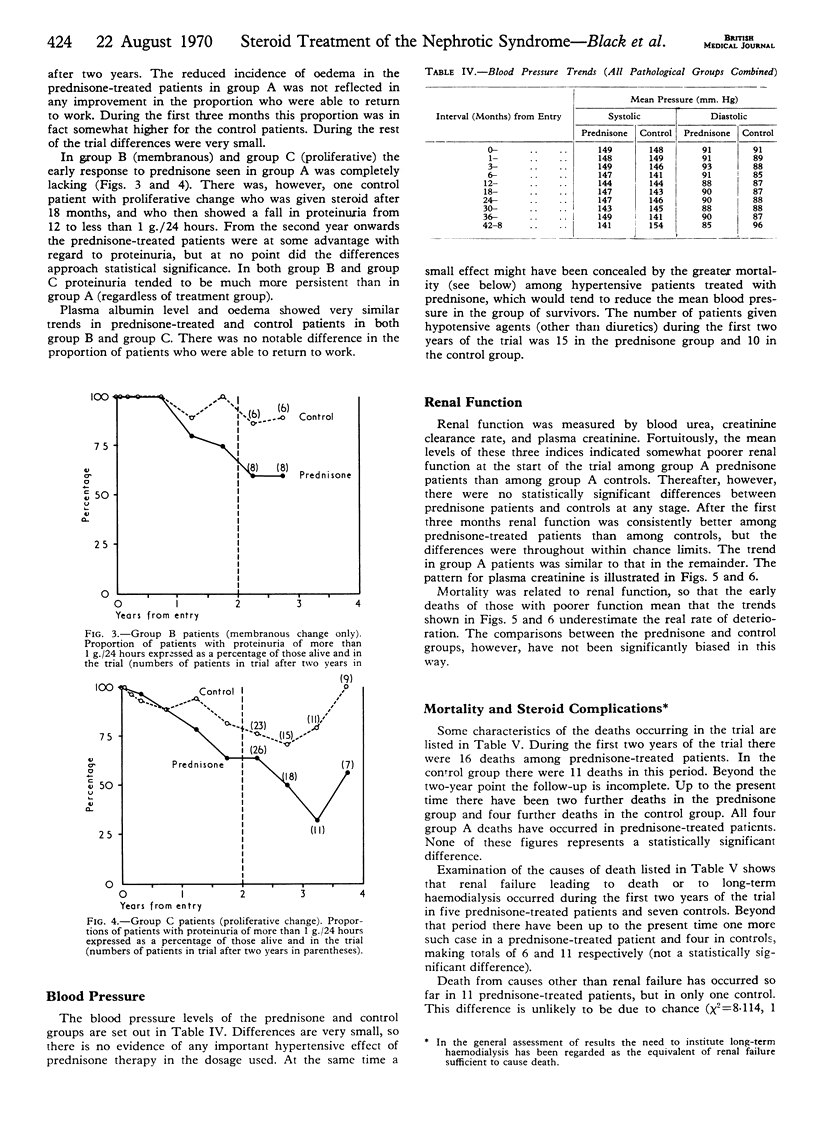
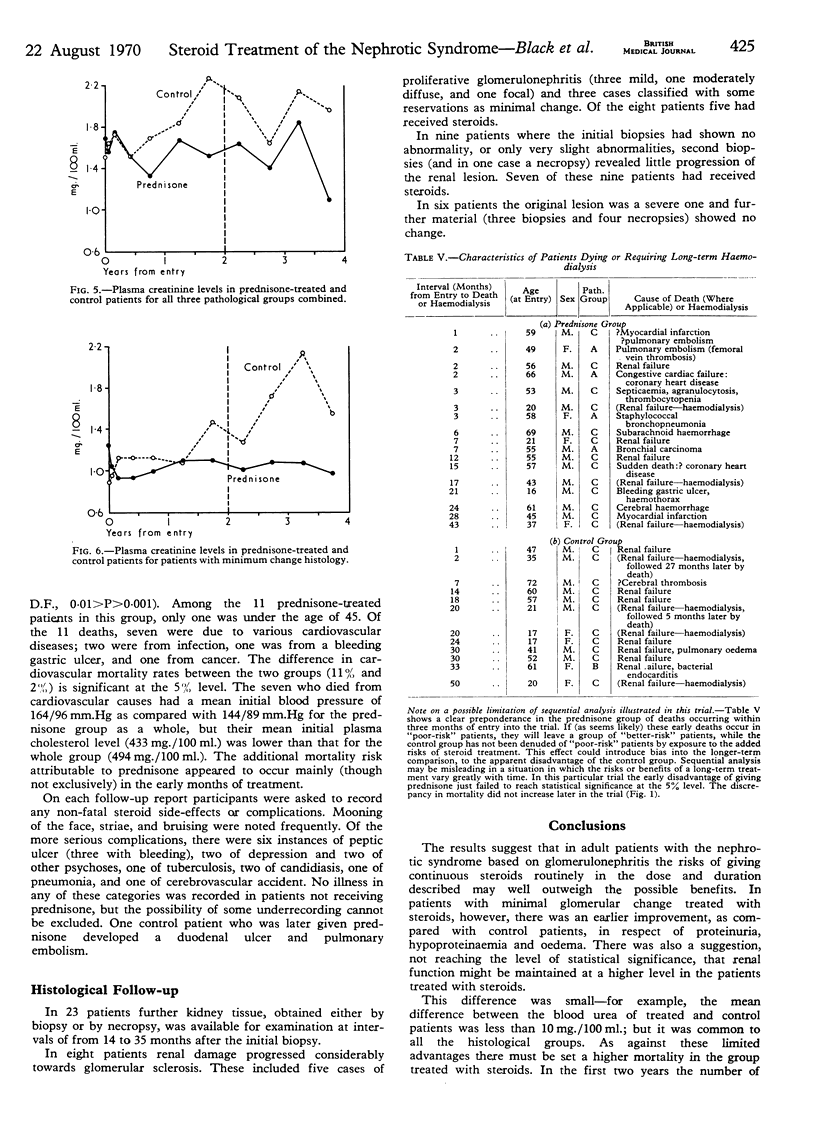
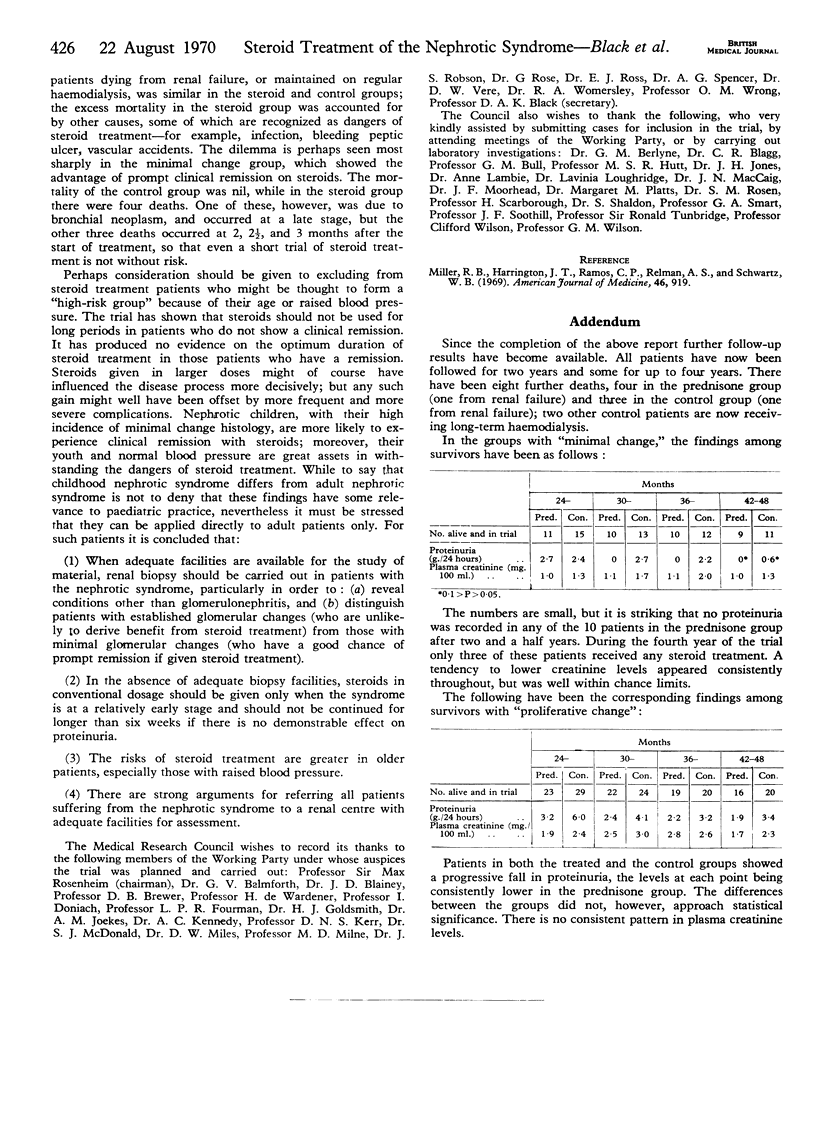
Selected References
These references are in PubMed. This may not be the complete list of references from this article.
- Miller R. B., Harrington J. T., Ramos C. P., Relman A. S., Schwartz W. B. Long-term results of steroid therapy in adults with idiopathic nephrotic syndrome. Am J Med. 1969 Jun;46(6):919–929. doi: 10.1016/0002-9343(69)90094-1. [DOI] [PubMed] [Google Scholar]


